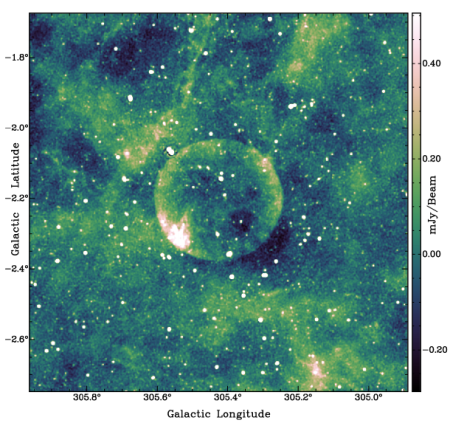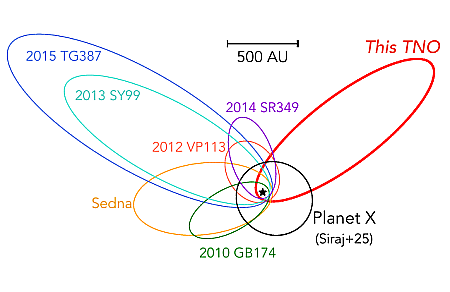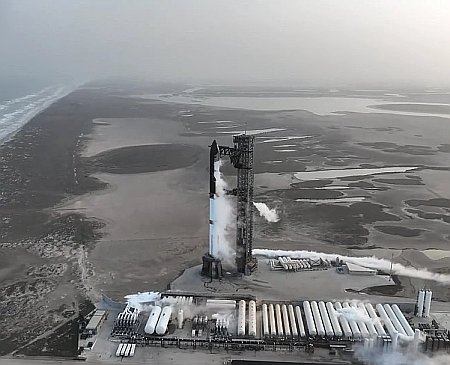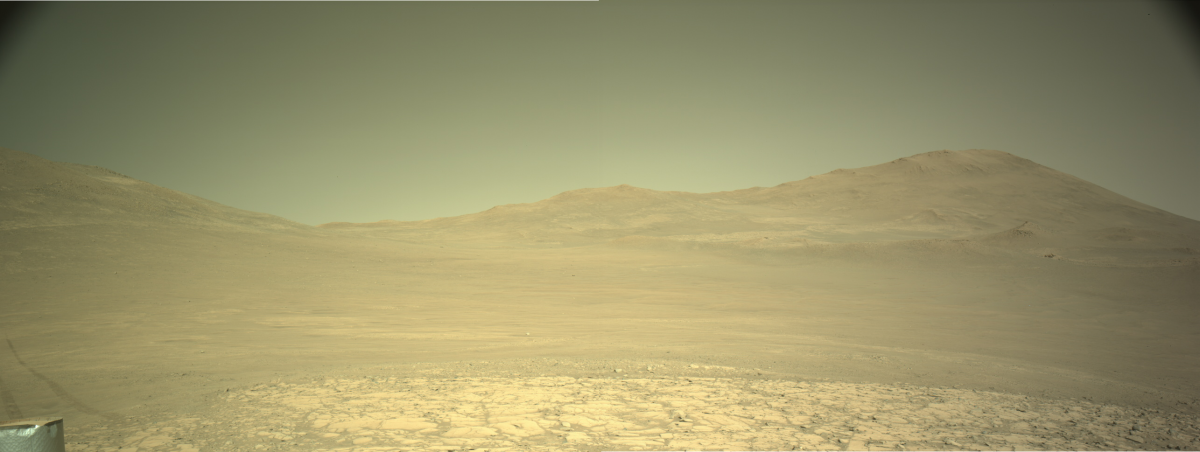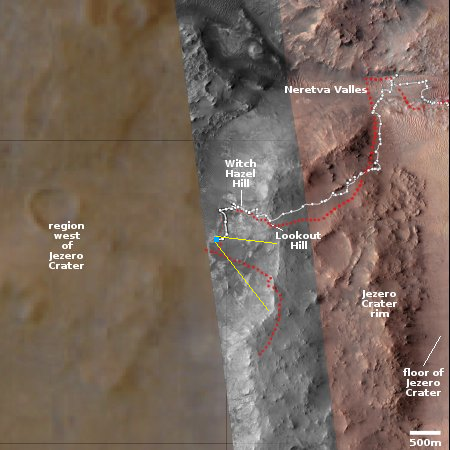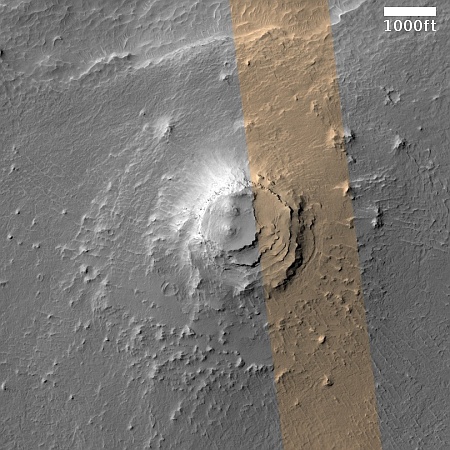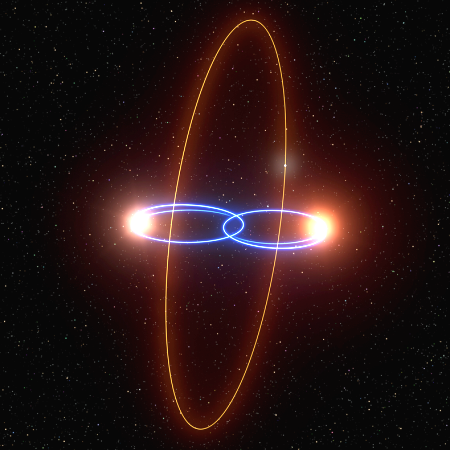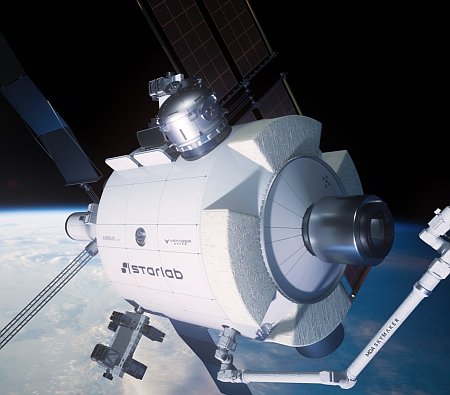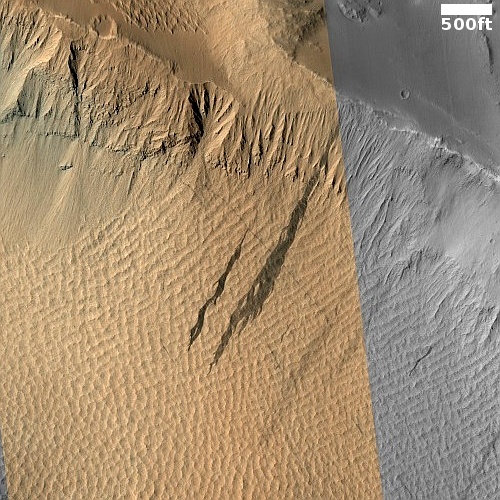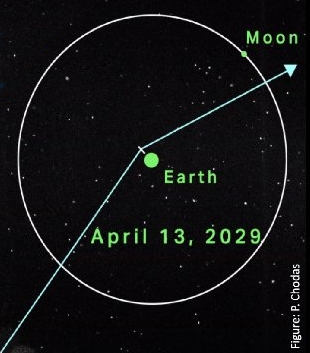
A cartoon (not to scale) showing Apophis’s
path in 2029
There were two stories today that heralded the addition of one real and two potential new spacecraft to rendezvous with the potentially dangerous asteroid Apophis when it flies past the Earth on April 13, 2029.
First, the European Space Agency (ESA) awarded a 1.5 million euro contract to the Spanish company Emxys to build a small cubesat that will fly on ESA’s Ramses mission to Apophis. This is the second cubesat now to fly attached to Ramses, with the first designed to use radar to study Apophis’ interior.
The second CubeSat, led by Emxys, will be deployed from the main spacecraft just a few kilometres from Apophis. It will study the asteroid’s shape and geological properties and will carry out an autonomous approach manoeuvre before attempting to land on the surface. If the landing is successful, it will also measure the asteroid’s seismic activity.
Second, American planetary scientists have been lobbying NASA to repurpose the two small Janus spacecraft for a mission to Apophis. These probes were originally built to go to an asteroid as a secondary payload when the Pysche asteroid mission was launched, but when Pysche was delayed they could no longer go that that asteroid on the new launch date. Since then both Janus spacecraft have been in storage, with no place to go.
The scientists say they could easily be repurposed to go to Apophis, but NASA will have to commit to spending the cost for launch, approximately $100 million. NASA officials were not hostile to this idea, but they were also non-committal. I suspect no decision can be made until the new administrator, Jared Isaacman, is confirmed by the Senate and takes office.
Time however is a factor. The longer it takes to make a decision the fewer options there will be to get it to Apophis on time.
At the moment there is only one spacecraft in space and on its way to Apophis, and that is the repurposed Osiris-Rex mission, now called Osiris-Apex. Japan might also send a craft past Apophis as part of its mission to another asteroid.
Learning as much as we can about Apophis is critical, as there is a chance it will impact the Earth sometime in the next two hundred years.

